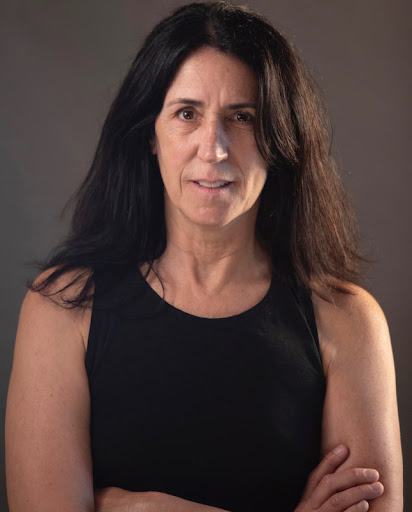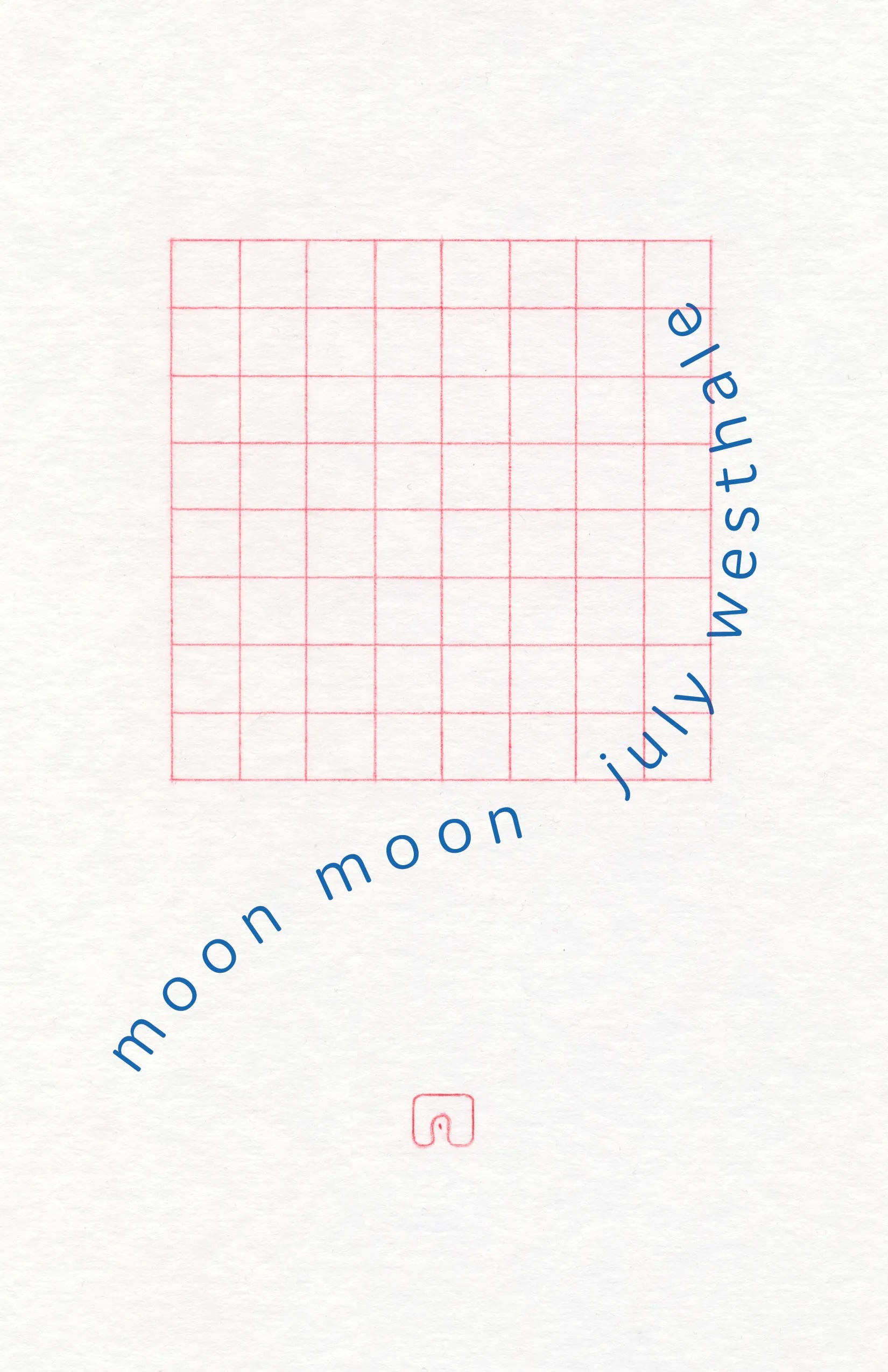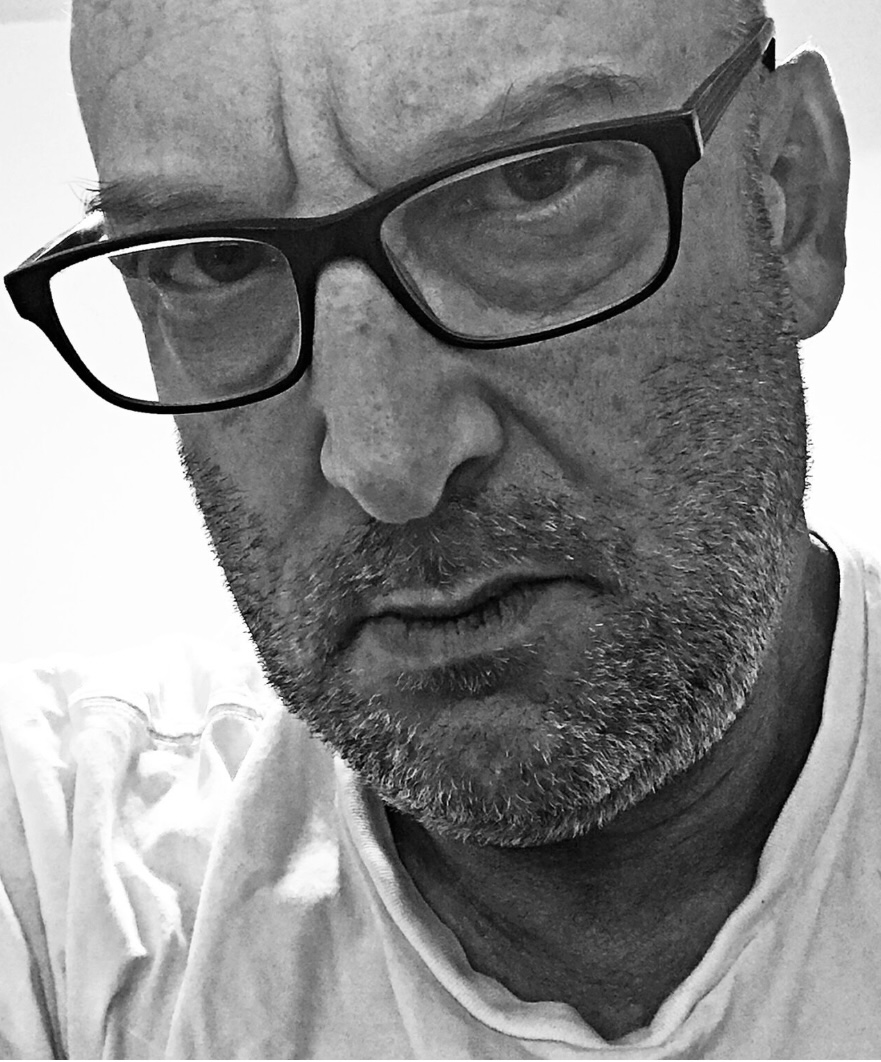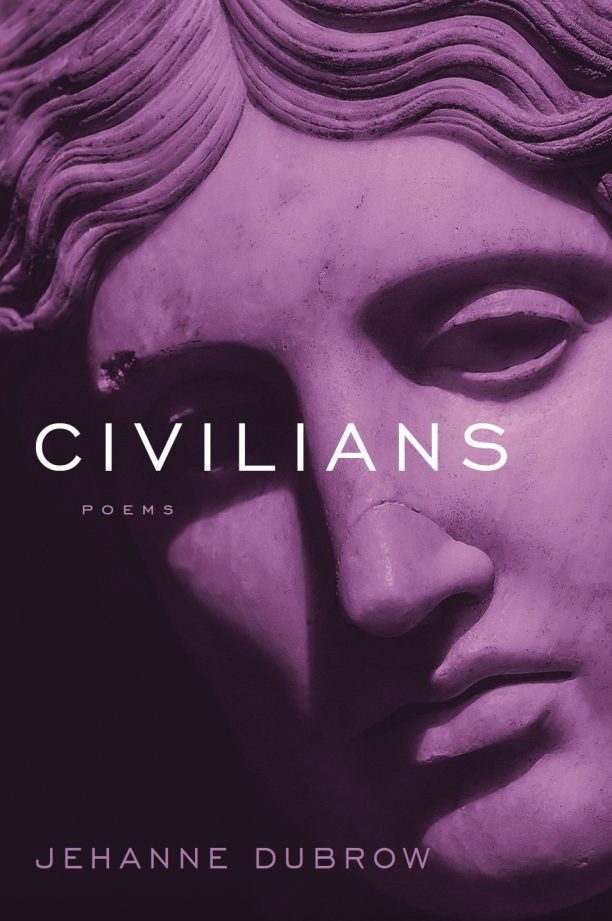
One day in 2008, after not writing for almost 10 years, JENNIFER MARTELLI searched “poetry workshops on the North Shore of Massachusetts.” She signed up for the first “hit” that came up, a Sacred Poetry workshop led by JENNIFER JEAN at the now-defunct Cornerstone Books in Salem, Massachusetts. Both Jennifers bonded over poetry, parenthood, and publishing—and a great friendship was formed! They continue to write together, travel together (because Jennifer Martelli is afraid to drive over bridges, Jennifer Jean takes the wheel), and share their work.
In this interview, Jennifer Jean asked Martelli about her latest collection, The Queen of Queens, which explores the political and emotional zeitgeist of the present by probing the past in a lyrical, smart, and singular voice. Jennifer Martelli’s poetry is the self-deprecating inheritor of Sylvia Plath and Marie Howe.
Jennifer Jean: The first poem in The Queen of Queens cycles around a “Grey Pearl” inside a clam, which is not a womb but a casket. The cover showcases several strings of pearls as well. And, in one heartbreaking poem about elder care and aging, you say, “No one / wore pearls anymore. My mother would cry…” Pearls pop up all over the book! Talk about the importance of the image and thingness of the pearl—to you—and how it contributes to understanding the book as a whole.
Jennifer Martelli: Yes, the pearls! Before I even began this book, I’d been thinking of the early 80s—the music, the clothes, especially. Pearls of all lengths, colors, and authenticity were huge! Think of Madonna at the 1984 MTV Music Awards! As I started to research Geraldine Ferraro (the 1984 nominee for vice president), I watched a video of her acceptance speech, where she was wearing pearls! I loved the circularity of the pearl because I felt that the book was circular: misogyny, Trump/Reagan, Covid/AIDS. I also felt this book was rooted in water, like a pearl. I loved that a pearl was formed as protection. I saw the pearl as an image through the book, as if on a necklace. The cover was a true gift! I was searching for images and came across this piece by French/Turkish artist, Diana Torje, called “Pearls of Light.”

JJ: The book seems to begin and end in tense exhaustion which strains towards birth (or rebirth): “I grew tired of being a grain of irritation in the world’s soft palette.” and “I am the long breath through the lips, / the double space no one here uses anymore.” In light of this, I’d love to know more about the ordering process for this book.
JM: The Queen of Queens went through so many arrangements! The first—and most obvious—was to put all the Ferraro poems in one section and all of the less historical poems in another. This just didn’t feel right; it didn’t reflect the circularity of the book’s intent: that what the speaker experienced as a 20-something in 1984 was happening again. I worked closely with the brilliant Rebecca Kinzie Bastian. She brought out the idea of the oracle and the idea of disintegration (like a pearl, like the mother). I also had just finished reading Yona Harvey’s, You Don’t Have to Go to Mars for Love. I was blown away, not only by her poems, but by the organization of the book: no section breaks, and each poem, though dense with imagery and emotion, looked different than the ones before and after. This gave the book transcendence. I wanted breath in this book. So, in the end, the poems were arranged to culminate in breath, or sighs. Becky and I went back and forth with the last poem and the penultimate poem, “The Challenger,” which ends with water.
JJ: The book starts with a trio of poems introducing the self. Then there’s a poem with a straightforward title announcing “Why I Began Writing About Vice Presidential Candidate, Geraldine Ferraro” where you don’t actually talk about Ferraro; you say, “I streamed Jennifer Beals on all/ my devices. How I love her every move.” It seems this poem begins a book-length, indirect answer to “Why I Began…” etcetera. Can you say more about this indirect–or slant-wise–approach to a topic?
JM: You and I have had this conversation for years: why am I writing about this topic? What’s at stake for me? I’m neither ahistorian nor a social commentator—I would have no idea how to write a book about the history of that time, except as to how I’ve internalized it. The book balances between factual and emotional truth. I began with my interaction with my own personal power—or lack of it. I wanted to introduce myself to the reader with these first few poems: here I am, here’s what happened! I had fun with these poems, especially the Jezebel poem, which is about our name, which dominated the country for over a decade! I liked the redness of the map: blood, an electoral map, and then how the Covid-19 virus was portrayed in the news. Jennifer Beals in “Flashdance” was a perfect segue from the 1980s to the present; she allowed me to bring the 80s into the present.
JJ: Later, your poem “Honeymoon During the Reagan Administration” makes a similar move, in that the “Reagan Administration” acts as context informing the “Honeymoon” situation described. As well, the book contains the recurring refrain “In the year of Ferraro…” which we first see in your fourth poem “Oracular” (a revisionist move taking ownership over your history). That refrain is a kind of pearl laced between the poems. All these moments—and more—made me wonder: How is this a political book? How is it not?
JM: Obviously, a book that centers itself around Geraldine Ferraro’s nomination—made possible only by the great Shirley Chisholm—is going to be political, and I could not have written this without acknowledging the misogyny inherent in our politics. One of the themes, though, is the circularity of events. As I said, it was uncanny (or not) how this period of time was being echoed in the 21st century. What is wonderful (I hope) is that this circle may have been broken/dented by Vice President Kamala Harris—though we see what’s happening to her in the press.
Where the book is less political is when I examine the horror of being erased, not there, not heard, forgotten. That’s the pearl dissolving, the sigh. My previous book, My Tarantella, talks about this, as does my forthcoming book. The poems that talk about my mother, who had dementia/Alzheimer’s, examine that kind of disappearing.
But I want this book to be read beyond that; as a book that confronts silencing and erasure as well.
JJ: This is your second book with Bordighera Press, which supports Italian-American writers. And, as I mentioned, The Queen of Queens focuses on Ferraro (and Nancy Pelosi, for instance: “Pelosi’s beads, so dark they reflected how endless and orbital.”) who are prominent and successful Italian-American politicians. But beyond that fact, how is this intrinsically an Italian-American book? How is it not?
JM: Bordighera Press has been such a wonderful place for me and I’m grateful for their unwavering support of this book and my previous book, My Tarantella. The books are political and, at times, take aim at the Italian-American culture, which, with all its beauty, has also given comfort to ideas I find abhorrent (a great essay by Juliet Grames addresses this). I wanted Bordighera because, in both books, I closely examine family. The “mother”—my mother, Mother Mary— is central. There is a requirement of beauty and excellence, too. The Queen of Queens also examines the Italian stereotypes hurled at Ferraro: that she had ties to organized crime, that she sounded too “Queens,” that she wasn’t bright. These ridiculous beliefs were layered on top of anti-woman language. But I also had to address how the Italian-American community shunned her, because she was a woman, because she was staunchly pro-choice.
But I want this book to be read beyond that; as a book that confronts silencing and erasure as well.
JJ: Who are the “Queens” in the book? Who are the “Queens” of the future?
JM: The term “The Queen of Queens” was a nickname given in 1984 to Ferraro by New York Governor Mario Cuomo: “The proud boast of the Empire State, the first lady of the Big Apple, the Queen of Queens!” It’s a shame she lost so badly in that state! Ferraro is the first queen; then Shirley Chisholm; then Kamala Harris; then the bees; then Molly Ringwald, Madonna, Jennifer Beals, Nancy Pelosi! I just love this name! It also echoes RuPaul’s “Queen of All Queens,” which seems so right. I hope our daughters are the Queens of the Future!
JJ: I love the poem “Rue” for its truth and “Fugue” for its complexity. But, the overwhelming emotion in this collection seems to be anger (bookended by the tense exhaustion I mentioned earlier). I know the poem title “Mal’Occhio” means “evil eye.” And in “When was my Anger was Conceived?” you attempt to answer the question in the title. Talk a bit about the anger showcased in this book.
JM: I began this book right after My Tarantella was released in 2018, in the middle of the Trump administration. But I really had to mine this anger. When did it start? Had I always been angry? I grew up in a family of sisters, in a political home, and came of age during Vietnam and Nixon (whom my father loved). I think I always felt contempt for women. Having no brothers, though, I had no comparison. But the worlds of my childhood were binary, separate from men, like a priest and his congregation. Bodily autonomy—and not having it—is a trigger for me. We were taught shame, we were taught being angry was wrong. Let’s face it, being called “angry” has never been a compliment. But I wanted anger in this book—not sadness—anger that people are erased. I was angry that it took me so long to recognize anger. You mention “Mal’Occhio”—the curse of envy—which was written in response to Jeffrey Epstein, and how he was given permission (rewarded) to hurt women. I wanted to be unafraid to write about anger.
JJ: But there’s also a lot of dancing in this book! How does this figure into the collection—and your life?
JM: Yes, dance! You and I both have daughters who dance—we’re steeped in it! I love the idea of dancing because of its choreography: its use of space, timing, steps. Part of this book was written during the shutdown. I was reading an article about how this affected professional dance: how so many dancers (my daughter included) were dancing in their homes, or outside, on videos. One dancer said, “I choreograph the distance between shadows,” which I used in my poem “Fugue.” I thought this was so beautiful and true.
The poem was almost an incantation. I love that poetry can do this: take something random and give it mythology.
JJ: You’ve included plenty of formal elements and forms—like the duplex. The poem “Vice Presidential Acceptance Speech by Congresswoman Geraldine Ferraro, July 19, 1984” seems to be an erasure. Did I miss any forms you were exploring? Can you talk about your exploration of formal elements?
JM: The duplex! Thank you, Jericho Brown! I love this form because of its returning—the last line repeats the first—but changed! I also used the “American Sonnet,”—thank you, Terrence Hayes and Diane Seuss. Two of the sonnets employ the “American Sentence”—each line is 17 syllables. The poem, “My Father Was an Italian Man. So Are My Husband and My Son,” uses a direct Ferraro quote—which has 17 syllables—as its title! I don’t write in form a lot, but what I do, I find it so satisfying. Some of the poems are failed attempts at form: “Oracular” wanted to be a villanelle; “Madonna, Triptych, 1984” was going to be a sonnet crown. With my erasure poem, I had to call my publisher just as the book was going into production because Kamala Harris was elected! This is why the (not) is crossed out—she changed history! And back to Yona Harvey, I liked the variation of shapes of poems on the page.
JJ: Numbers feature prominently too; in “16 Reasons I Became a Grey Pearl,” “Tongue Root,” “Write a Poem About the Number 16,” and in all the poems with dates listed.
JM: This was a bit of serendipity. I was in the midst of research and was given a writing prompt (while on a DIY retreat in Gloucester): write a poem about the number 16. So, I went down a rabbit hole and had fun with the math: 16 women in the House of Representatives when Ferraro was there; Mondale was losing by 16 points; 32 (16 x 2) to lift the ban on “men who have sex with men” for donating blood, etc. 16 became magical, talismanic. The poem was almost an incantation. I love that poetry can do this: take something random and give it mythology.
For “Tongue Root,” which quotes you, I wanted a hybrid poem: lists, paragraphs, sounds. I love a list poem!
JJ: “Strega” is an Italian liquor but it also means witch and both meanings converge in your haunting lyric of that name which begins: “Long ago, when I needed to be numb…” On the surface, this poem is tonally different in that it seems to inhabit a mystical space—but it goes along with the women from history (even Nancy Regan’s astrological obsession gives her witch status). Talk a bit about this poem…
JM: The figure of the Strega—the witch or oracle—needed to be in this book for a few reasons: first, as a guide and seer; second, as an empowered woman, feared, sought after; and third, as a symbol of Italian superstition as well. This poem speaks to legacy: what am I passing onto the future, my children? I love the idea of emotions—especially trauma—living in the body: joints, bones, soft organs. The poem also speaks to regeneration, “one of my sisters will grow,” but also vulnerability, “sometimes I am my children, and those times are the most painful.”
JJ: In “Root” you say, “I was Sylvian. I was Plathian.” Your poem “Strega” is—to me—Plathian. In “Relinquishing” you mention a queen bee. Was Sylvia Plath an inspiration for this collection and if so, where else is her influence consciously applied?
JM: Plath will always be an inspiration! In the opening movement of “Root,” where the speaker cuts the onion, then her finger, I had to acknowledge Plath! The queen bee in “Relinquishing” is left alone, abandoned—oh, so Sylvia Plath! Plath’s Bee Sequence will always be one of the most incredible examples of horror poetry: the anger, the grief, the menace. I go to her for her elegant anger and her transformation of anger into something like love. To an extent, “Rhymes, Slant and Otherwise,” was inspired by “The Applicant” in that I was manipulating sounds and tone—and having some fun with the rage. Same with “He is My Man. He is My Tomato.”
JJ: You talk about prognostications, astrology, astrologers, palm readers, Tarot throughout the collection. Why?
JM: The simplest answer is I love the shape of constellations and the idea of prognostication, with all the magical tools! I was really interested in the idea of reading signs. Had we read the Reagan Administration clearly—when greed and Trump were in their ascendency—could we have avoided what we have endured? We witnessed misogyny, racism, homophobia, and fecklessness—and some of the players are still around (Roger Stone???). Remember, too, that Reagan had an official White House astrologer (Joan Quigley) who advised him on some really important decisions!
So, I wonder, can we read the future? And if so, would that make a difference?
JJ: What are some future projects you have in the works?
JM: I’m thrilled that I have a book forthcoming in late 2024 (I’ve been sitting on this good news since August) from Lily Poetry Books, Psychic Party Under the Bottle Tree. This is probably the least political book I’ve ever written. It’s about long-term recovery—it has a lot of astrology, too! I also just found out that my chapbook of epistolary poems responding to the tragic Dobbs decision will be published this year by Gray Book Press!
Jennifer Martelli is the author of The Queen of Queens, winner of the 2023 Italian American Studies Association Book Award and selected as a “Must Read” by the Massachusetts Center for the Book, and My Tarantella, also selected as a “Must Read” and named as a finalist for the Housatonic Book Award. She is the author of the chapbooks All Things are Born to Change Their Shapes, winner of the Small Harbor Press open reading, In the Year of Ferraro from Nixes Mates, and After Bird, winner of the Grey Book Press open reading. Her work has appeared in The Academy of American Poets Poem-a-Day, Poetry, The Tahoma Literary Review, Scoundrel Time, Broadsided Press, Verse Daily, Iron Horse Review, and elsewhere. Jennifer Martelli has twice received grants from the Massachusetts Cultural Council for her poetry. She is co-poetry editor for MER. www.jennmartelli.com
Jennifer Jean’s poetry collections include VOZ, Object Lesson, and The Fool. Her resource book is Object Lesson: a Guide to Writing Poetry. And, she’s co-written and co-translated Where Do You Live? أين تعيش؟ (Arrowsmith Press, 2024) with Iraqi poet Dr. Hanaa Ahmed. As well, she’s edited the forthcoming anthology Other Paths for Shahrazad: a Bilingual Anthology of Poetry by Arab Women (Tupelo Press, 2025). Her work appears in POETRY, Rattle, The Common, On the Seawall, the Los Angeles Review, and elsewhere. She’s received honors, residencies, and fellowships from the Kenyon Review Writers Workshop, the Academy of American Poets, the Mass Cultural Council, DISQUIET, the Kolkata International Poetry Festival, and the Women’s Federation for World Peace. Jennifer is an organizer for the Her Story Is peace-building collective, host of the Wilder Words reading series, and senior program manager of 24PearlStreet, the Fine Arts Work Center’s online writing program. www.jenniferjeanwriter.com




